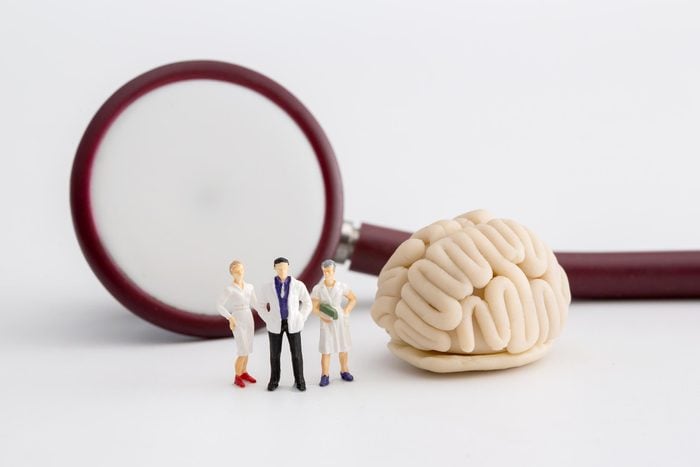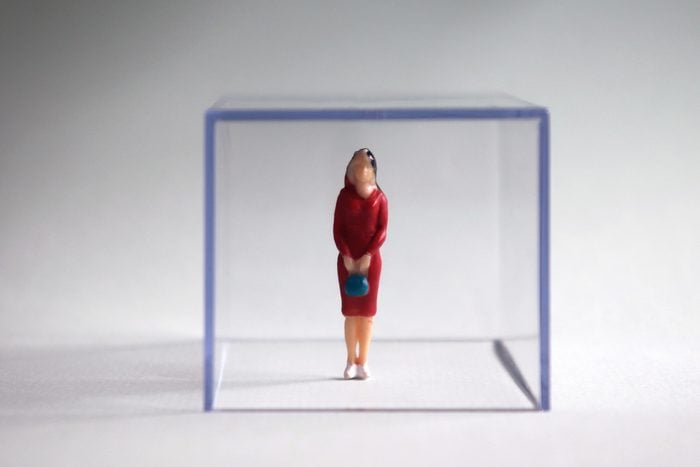
What is autism?
This condition turns up early in childhood or even infancy, and it’s characterized by a child’s difficulties with speech, non-verbal communication, and repetitive behaviors, according to the American Psychiatric Association (APA). The symptoms of autism spectrum disorder can fall into two categories:
Social interaction and communication problems: According to the APA, these can include difficulty with back-and-forth communication, and a failure to share interests or feelings.
Difficulty relating to people, things, and events: These can include missed social cues, trouble making friends, and not being able to read facial expressions or hold eye contact, says the APA.
Autism numbers may be higher than experts realized: Although the most recent numbers from the Centers for Disease Control indicate that 1 in 59 children has autism, a 2018 study in the journal Pediatrics found that one in 40 children in the United States has the condition.

Obsessive-compulsive disorder (OCD)
The symptoms of OCD—such as compulsive hand washing, cleaning, or touching items like doorknobs—can resemble the repetitive motions of autism. People with OCD have a hard time keeping their focus off their obsessions, a phenomenon also shared by those with autism. The key difference is that people with OCD often feel uncomfortable, bothered, or tormented by their compulsions, reports verywellhealth, while repetitive or intrusive thoughts don’t always bother people with autism—the impulses can even be a source of comfort. Unlike autism, OCD can strike at any age and hits women slightly more than men, according to the APA, and it can be managed with talk therapy and medications.

Sociopathy
Also known as antisocial personality disorder, this “pattern of disregarding or violating the rights of others,” according to the APA, can lead a person to act impulsively and disregard social norms. This may sound similar to autism, but the key difference is that people with sociopathy “operate in a single-minded fashion, employing any means to fulfill their self-serving objectives,” reports Psychology Today. In other words, their behavior is to further an agenda; with autism, there’s no agenda or ulterior motive. Another difference is that abuse, neglect, and a violent childhood can play a role in developing sociopathy—and that’s definitely not true with autism. Although the symptoms aren’t the same for everyone on the spectrum, these are the silent signs of autism all parents should know.

Schizophrenia
This serious mental illness is characterized by “incoherent or illogical thoughts, bizarre behavior and speech, and delusions or hallucinations, such as hearing voices,” according to the APA. It’s similar to autism in that both conditions involve cognitive and sensory-processing problems, both seem to run in families, and both involve atypical brain development, according to Spectrum News. And both can lead to social withdrawal and a lack of emotional sensitivity. However, schizophrenia is more likely to be diagnosed in adulthood; also, autism doesn’t include delusions and hallucinations.

Bipolar disorder
Bipolar disorders (bipolar I and bipolar II) are “brain disorders that cause changes in a person’s mood, energy and ability to function,” according to the APA. People with bipolar disorders suffer extreme and intense emotional states called mood episodes; these can be manic, lethargic, or depressive in nature. During a depressive episode, someone with a bipolar disorder will withdraw socially, become easily distracted, and act unpredictably—all possible traits of autism. The difference is that the episodes come and go for people with bipolar disorder. Also, people with bipolar disorder can be treated through a combination of talk therapy and medication.

Anxiety
Generalized anxiety disorder (GAD) “involves persistent and excessive worry that interferes with daily activities. This ongoing worry and tension may be accompanied by physical symptoms, such as restlessness, feeling on edge or easily fatigued, difficulty concentrating, muscle tension, and problems sleeping, according to the APA. One way it differs from autism is that GAD is extremely common—18 percent of Americans have an anxiety disorder, according to the Anxiety and Depression Association of America. And, unlike autism, GAD is more likely to strike women than men.

Learning disorders
Basically, this is any disability that interferes with the three “R”s—reading, writing, and arithmetic, according to the APA. While kids with autism will also struggle with learning, they are capable of intense focus and comprehension on a topic that interests them. “For kids with autism, the main struggle involves social understanding, communication, and repetitive routines or behaviors—including narrow and obsessive interests. These symptoms are not typical of kids with learning and attention issues,” according to understood.org. These are 9 more things teachers wish you knew about learning disabilities.

Attention-deficit/hyperactivity disorder (ADHD)
There can be overlap in the symptoms of autism and ADHD—difficulty focusing, hyperactivity, and impulsivity. But while children with ADHD will resist order and repetition, these things can be comforting for a child with autism, reports WebMD. A child with autism may be reluctant to speak or engage with others unless they’re talking about a topic that interests them; with ADHD, a child will talk impulsively, often, and interrupt others. An estimated 8.4 percent of children and 2.5 percent of adults have ADHD, and like autism, it’s common in males, according to the APA.

Post-traumatic stress disorder (PTSD)
PTSD can involve behaviors that resemble some of the symptoms of autism—nightmares, emotional outbursts, feelings of detachment or estrangement. But as the APA points out, PTSD usually results from a traumatic incident, plus it strikes women twice as often as it does men. (Autism is much more prevalent in boys than girls.) Also, PTSD can be treated with psychotherapy and cognitive-behavioral therapy (CBT) and medications.

Tourette syndrome
According to the Tourette Association of America, this disorder can include tics like persistent blinking patterns, shrugging shoulders, grunting sounds or saying certain phrases unwillingly. This lack of control over movements and vocalizations also turns up in autism, but the biggest difference between autism and tic disorders is that tic disorders can decline or disappear with age, according to the American Academy of Child and Adolescent Psychiatry. Here are 14 more things doctors wish people knew about autism.
